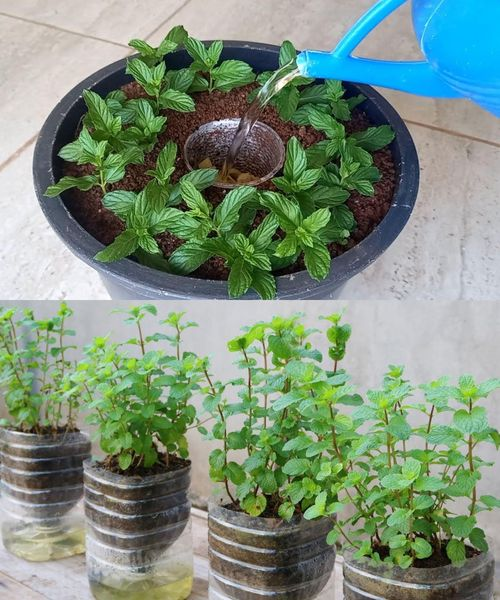ADVERTISEMENT
The basics of how to grow mint indoors
To maximize the growth of your indoor mint plant, you’ll need to provide it with a few things.
Sunlight: Mint requires a very bright indoor location. Outdoors, mint can tolerate a good bit of shade. But inside, the more light, the better. Otherwise, the plant will stretch for the light and become leggy and pale. If you don’t have a sunny, north-facing window that receives sun through the better part of the day, consider purchasing a small grow light to install over your mint plant.
Water: One of the most straightforward factors to consider when learning how to grow mint indoors is watering. Unlike some other herbs and houseplants, mint is far from demanding. Yes, you can over- or under-water it, but neither is easy to do. Mint tolerates both “wet feet” and dry soils. However, I aim for a good balance between the two. Water the plant only when the soil feels dry to the touch and the pot is light. To water indoor mint plants, move the pot to the sink or bathtub, turn on the water, and let it flush through the soil and exit the drainage hole in the bottom of the pot. I flush water through the pot three or four times, let it drain fully, then return the pot to its spot on the windowsill.
Fertilizing indoor mint
This is another easy task when it comes to growing mint indoors. From mid-spring through late summer, fertilize your indoor mint plant every three weeks with a liquid organic fertilizer. Mix it according to label instructions. If you plan to harvest from your plant all winter long, from early fall through early spring fertilize once every six weeks. Unlike other houseplants, indoor mint will still be actively growing through the winter months, so feeding it is a good idea. Just don’t overdo it.
How to prune indoor mint plants
Regular “haircuts” are necessary to keep your mint plant bushy and to encourage new growth. Use a pair of herb scissors or needle-nose pruners to trim the stems back on a regular basis, ideally once every few weeks. Make the cut just above a set of leaves and two new stems will develop from the leaf nodes, causing each stem to branch in two. Use the trimmings in the kitchen.
Three ways to grow mint indoors
There are three primary ways to grow mint as a houseplant. Let’s discuss each option in turn.
1. How to grow mint indoors – in soil
This is the most familiar way to grow mint inside. Choose a pot that’s at least 8 inches in diameter and has a drainage hole in the bottom. I like decorative ceramic pots, but plastic works too. Avoid clay pots because they dry out too quickly. Use a high-quality, general potting soil to pot your mint plant, making sure to leave about a half inch of head space between the top of the soil and the rim of the pot. This acts as a reservoir and keeps irrigation water from running off too quickly. Potted mint plants can live for years as houseplants.
2. How to grow mint indoors – in water
Mint can also be grown indoors in water. The main benefit of this method is the lack of soil. No mess, no watering, and never any fungus gnats. However, mint doesn’t live forever in water. Eventually the leaves will yellow and the plant will stop growing. However, keeping a few water-rooted stems in a jar above the sink means you’ll be able to make the occasional harvest. To start growing mint indoors in water, simply take some stem cuttings from a mother plant, remove all the lower leaves, and prop the stems in a glass of water. Change the water and wash the glass every five to seven days. They will quickly develop roots and can be grown in the water-filled jar for a few weeks or months, depending on the growing conditions.
Continued on next page
